Listing of bottles of Blended Malt Whisky
If it is not here, it doesn't exist!
Well, not exactly. This listing provides bottles of Blended Malt Whisky that have been sold in the last years by some of the most reputated online retailers. If the bottle you are looking for isn't listed, you are looking for a quite unique bottle.
Ballantine's
- “Ballantine’s whiskies are examples of what the art of blending whisky can achieve. Whatever you think of blended whiskies you really need to give a try to them. The short name of George Ballantine and sons. A brand of blended whiskies located in Dumbarton, Scotland. Founded in 1827 by George Ballantine, a farmer, as a grocery in Edimburg that supplied a range of whiskies to his clients. In 1865 George delegates to his eldest son Archibald. He opens a larger establishment in Glasgow and concetrate in the wine and spirits trade. Archibald Ballantine created his own blended whisky. As a result of the growing the second son enters in the business. Ballantine’s is sold to Barclayand McKinlay in 1919. And adquired later by Canadian distiller Hiram Walker in 1937. Hiram Walker adquire Miltoduff and Glenburgie. These two single malts make the sould of the Ballantine’s blends. Also a new grain distillery was built at Dumbarton, the largest in Europe. In 1988 became part of Allied Domecq. Four years later, the grain distillery is mothballed and the production of grain whisky is moved to Strathclyde. In 2005, the brand is adquired by Pernod Ricard, which still mantains a large bonded warehouse and bottling plant in Dumbarton. A year later, Sandy Hyslop is appointed Ballantine’s Master Blender, the fifth in 180 years.”
-

Ballantine's Pure Malt 12 year
Compass Box
- “Compass Box is an specialist artisan Scotch whisky maker which creates small batches scotch whisky with a very high quiality. Most of them are awards winning bottles. Compass Box philosophy is to share the joys of great whisky with more people in the world. The soul of Compass Box is John Glaser. He learn his art through one of the industry largest companies, where he developed a passion for scotch whisky and dreamt of starting his own company. In 2000 he started Compass Box Whisky Company, fine tunning his firsts whiskies in his own kitchen. One of the things that define Compass Box is their seeking of evolutions of traditional techniques, particulary in oak maturation. This effort granted them problems with mighty powerful Scotch Whisky Association ( SWA ) which banned their first version of The Spice Tree because of the way whisky was matured in the cask.”
-
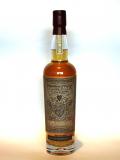
Compass Box Flaming Heart 10th anniversary
-

Compass Box Flamming Heart
-
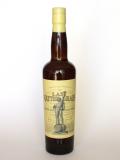
Compass Box Last Vatted Grain
-

Compass Box Last Vatted Grain
-

Compass Box Oak Cross
£40.43 -

Compass Box Oak Cross
£40.43 -

Compass Box Peat Monster 10th anniversary
-

Compass Box The Peat Monster
£39.45 -

Compass Box The Peat Monster
-

Compass Box The Peat Monster
£43.43 -
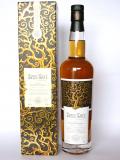
Compass Box The Spice Tree
£39.95 -

Compass Box The Spice Tree
£44.44 -

The Last Vatted Malt
£175.00 -

The Last Vatted Malt
Douglas Laing
-

Big Peat Blended Malt / Christmas Edition 2012 Blended Whisky
-
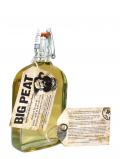
Big Peat Private Bottling
-

Big Peat Private Bottling
-

Rock Oyster Blended Malt
£36.73 -
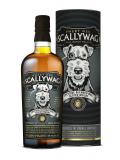
Scallywag Blended Malt Douglas Laing
£37.84 -

Scallywag Blended Malt Douglas Laing
DYC
- “Destilerias Y Crianza del Whisky is the result of a man’s determination: Nicomedes Garcia, to create a whisky with the highest standards of the scotch whisky but with a reasonable price. Fifty years later, DYC is the best selling whisky in Spain and they are entering the market of the single malts. DYC stands for Destilerias y Crianza del Whisky ( distilling and maturation of whisky ) and it is an enterprise created in 1958 by Nicomedes Garcia Gomez. He started working on his father’s humble distillery of liquours at Valverde del Majano in Segovia, creating in 1919, with just only 18 years, Anis Castellana. Nicomedes was a bussinessman and started all kind of things like a bus company, a marketing agency, a ships company. But he started making whisky just by bad luck. In 1929 a batch of Mahou beer was rejected by a client because it was faulty. So instead of dropping the beer, he distilled it and stored in oak butts. After three years he gave a try to the potion and he realized that it wasn’t that bad at all, so he spent all the war drinking that whisky and started up the interest in distilling whisky. In 1955, after being travelling around Scotland he talked with some friends and they founded a whisky destillery at Palazuelos de Eresma on the place where the old Marques del Arco’s mill was standing. The place was choosen for the great quality of the water supply from the river Eresma, the good climate for whisky maturation so near the sierra de Gredos and the near supply of good quality barley from the fields of Castilla. The first distillation started in February of 1959 after having fought to change the law that forbid distillation of malt in Spain. It wasn’t till 1963 when the firsts bottles were made available to consumers. The DYC distillery includes the distilling factory, a bottling plant and a warehouse for maturation. DYC began to grow exponentially and by 1987 its sales stock up to 40 million € and owned the 46% of the spanish market. DYC even bought a scottish distillery, Lochside, to secure an extra supply of whisky to create their blends. In 1989 DYC was sold to Pedro Domecq group and at a later time sold again to Beam Global. DYC uses a double distillation process similar to scotch whisky. The mash is distilled in pot stills made with the same techniques than scottish ones. For the grain distillation, that is done in Valverde del Majano, DYC uses a column still. The grain is mainly corn. Later whisky is usually matured in american oak barrels of 190 litres that contained bourbon before. The angel’s share is around 3%. Malt whisky is later blended with grain whisky prior to bottling. Bottling is also done at Valverde del Majano on the distillery plant. DYC has now two plants in Segovia, with around 100 workers and produce annually around 2.3 million litres.”
-
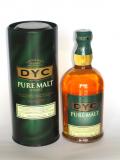
DYC Pure Malt
Ian Macleod
- “Ian Macleod and Company was founded on the 26th October 1933. Today the company produces a number of spirits products, though it is most centred on Scotch whisky. Leonard Russell Sr was a whisky broker and it was his family that acquired Ian Macleod on the 18th March 1963 with Peter Russell as the managing director. The first brand was acquired during that year, namely Isle of Skye blended whisky. Peter’s brother, David became the director in 1964 and he stayed with the company until 2000. Over the course of the 20th century, Ian Macleod acquired a gin brand as well as further Scotch brands. At the turn of the millennium, Watson’s rum was acquired and the named was changed to Ian Macleod Distillers in 2003 with the acquisition of the Glengoyne distillery and the Langs brand.”
-

The Six Isles
£28.67 -

The Six Isles Pomerol Cask Finish
Ichiro
-

Ichiro's Malt Mizunara Wood Reserve
-

Ichiro's Malt Mizunara Wood Reserve
Johnnie Walker
- “Johnnie Walker is the story of a brand that started in a humble grocery at Scotland and became one of the best selling whisky company in the world. Johnnie Walker openend many countries to Scotch whisky: Keep walking. John Walker, born at Kilmarnock in 1805, was a shopkeeper at Kilmarnock, in Ayrshire, Scotland. He founded his grocery in 1819 with only fourteen years. John Walker managed to sell almost everything, even his own whisky, under the Walker’s Kilmarnock Whisky, which was surely a single or blended malt, as blended whisky was forbidden up to 1860. In 1843, with the arrival of the railway at Kilmarnock, John and his son Alexander realize the potential of the train for their enterprise. In 1860 they decide to use squared bottles, that remains an icon of the mark, together with the slanted johnnie walker label, that is inclined 24 degrees. Having squared bottles was good because they stock in less space and there were less broken bottles. Five years later, Alexander Walker create their first blend. Each type of blend: Old Highland Whisky, Special Old Highland Whisky and Extra Special Old Highland Whisky, had its label of a different color. Alexander so renamed each bottle according to their label color in 1909. In 1908, Tom Browne, a cartoonist, created during a meal the striding man, that has become the icon of Johnnie Walker to nowadays. More expressions were introduced, in 1920, Johnnie Walker Gold Label was created and it was a special blend given only to the most successfull directors of the brand and in 1932 Johnnie Walker Swing, a blend which bottle was specially created for ships so that the bottle would swing with the movement of the waves. In 1934, King George V gave the Royal Warrant, one of the highest distinctions in the United Kingdom. In 1966 they obtained too the Queen’s Award for export achievement. In 1991, they created Johnnie Walker Premier, a blend of malt and grain whiskies with many of them from closed distilleries. In an attempt to gain the premium market they created the Johnnie Walker Blue Label, that although it is non age statement whisky, contains many old whiskies some of them from already closed distilleries. Expanding the firm, Johnnie Walker Gold Label was introduced in 1995 and Johnnie Walker Green Label in 1997, which is a blended malt. In 2008, they created the Johnnie Walker Blue Label King George V, that contained whisky from oak casks that date of the period of king George V, the one that gave the royal warrant to Johnnie Walker. Now, Johnnie Walker is part of Diageo, and they no longer blend the whisky at Kilmarnock. Also Diageo announced that they were moving what remained of the production out of Kilmarnock too.”
-
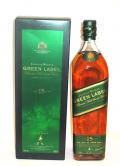
Johnnie Walker's Green Label
£39.88 -

Johnnie Walker's Green Label
Master of Malt
-

Master of Malt 12 year Islay
-

Master of Malt 12 year Islay
-
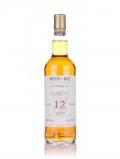
Master of Malt 12 year Orkney
-

Master of Malt 12 year Orkney
Mavela
- “P&M is actually a cooperative, located on the Mediterranean island of Corsica, between two companies (Domaine Mavela and Brasserie Pietra) for the production of whisky. The name 'P&M' represents this partnership between 'Pietra & Mavela'. Established as a brewery in 1996, Pietra produces the mash that is then distilled at the Mavela Distillery. ”
-

P&M Pure Malt
Nikka
- “The founder, Masataka Taketsuru, traveled to Scotland in 1918 to learn the process of distilling Scotch whisky first-hand. In 1920 he joined a Japanese whisky company before starting Nikka in 1934.[1] Nikka produces a wide variety of Japanese whiskies, ranging from ¥900 (per 700ml bottle) Black Nikka sold in Japanese convenience stores, to the ¥15,750 (per 750ml bottle) Nikka Single Cask.[2] In 2008, Yoichi 20 Year Old was voted best single malt at the World Whisky Awards. [3]”
-
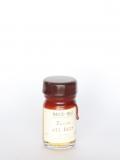
Nikka All Malt
£37.13 -
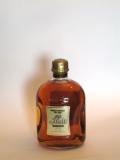
Nikka All Malt Pure and Rich
£32.48 -

Nikka Pure Malt Black
£40.97 -

Nikka Pure Malt Black
£46.24 -
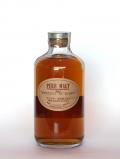
Nikka Pure Malt Red
£39.29 -

Nikka Pure Malt Red
£39.29 -

Nikka Pure Malt White
-

Nikka Pure Malt White
-

Nikka Super
£46.55 -

Nikka Super
-

Nikka Whisky From the Barrel
£38.45 Spencerfield Spirits Co
-

Sheep Dip
£28.99 -
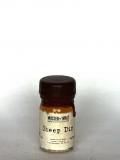
Sheep Dip
Taketsuru
-

Nikka Taketsuru 12 year
-

Nikka Taketsuru 12 year
-

Nikka Taketsuru 17 year
£194.62 -

Nikka Taketsuru 21 year
Talisker
- “The distillery was built in 1830 by Hugh and Kenneth MacAskill, and expanded in 1900. During this early period, the whisky was produced using a triple distilling method, but changed to the more conventional double distilling in 1928. The distillery was nearly destroyed by fire in 1960, however five exact replicas of the original stills were constructed to preserve the original Talisker flavour. Talisker was a favourite whisky of writers Robert Louis Stevenson and Henry Vollam Morton.[citation needed] The distillery operates five stills, two wash stills and three spirit stills. All the stills use worm tubs (condensing coils) rather than a modern condenser, which are believed to give the whisky a "fuller" flavour (itself an indication of higher sugar content).”
-

Talisker& Craigellachie - Double Barrel (Douglas Laing)
Unspecified Malts
-

Big Peat
£40.43 -

Big Peat
-

Jon, Mark and Robbo's The Rich Spicy One
-

Jon, Mark and Robbo's The Smooth Sweeter One


